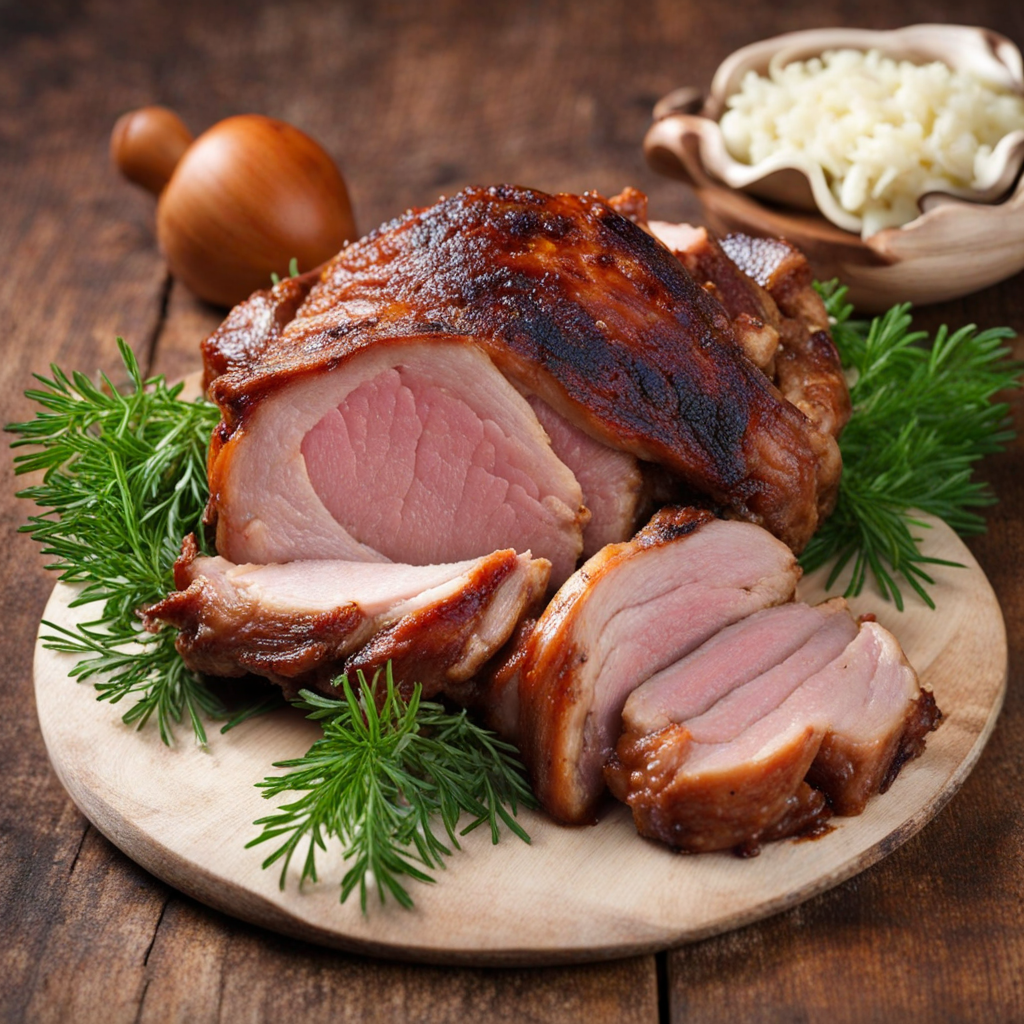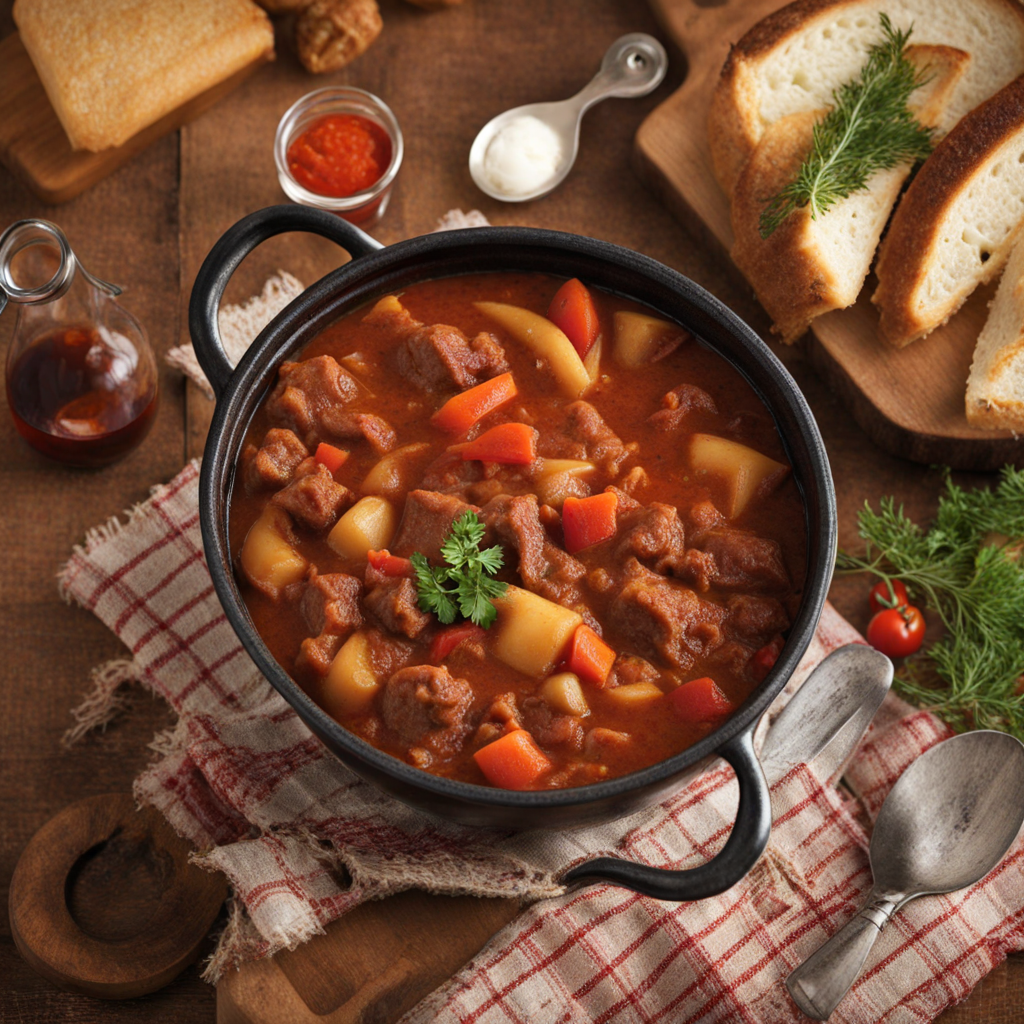Sisky
Sisky is a traditional Slovak dish that beautifully showcases the country's rich culinary heritage. This unique dish is primarily made from a simple yet flavorful combination of finely grated potatoes, flour, and sometimes a touch of salt. The ingredients are expertly mixed to form a dough that is then shaped into small dumplings or gnocchi-like pieces. These little morsels are typically boiled until they achieve a delightful tenderness, making them a comforting staple in Slovak households. What sets Sisky apart is its versatile nature, allowing for a variety of delicious toppings and accompaniments. Often, they are served with a generous drizzle of melted butter, which enhances the dumplings' natural flavor and adds a silky richness. Additionally, Sisky can be paired with sautéed onions, crispy bacon, or even a sprinkle of poppy seeds to elevate the dish further. Each bite encapsulates a harmonious blend of textures and tastes, making it a satisfying experience for any palate. Beyond its simplicity, Sisky is a dish steeped in tradition and nostalgia, often enjoyed at family gatherings and special occasions. It embodies the Slovak spirit of using humble ingredients to create something truly special. As you take your first bite, you'll be greeted with a warm, comforting sensation that transports you straight to the heart of Slovakia, inviting you to savor the authentic flavors of this remarkable cuisine.
How It Became This Dish
Sisky: A Culinary Journey Through Slovakia’s History Slovakia, a land rich in folklore, traditions, and diverse cultural influences, boasts a culinary heritage that reflects its historical pathways. One of the lesser-known yet delightful dishes of this Central European nation is "sisky." This traditional dish, often described as a type of dumpling or potato-based pastry, encapsulates the essence of Slovak home cooking and embodies the country’s agricultural roots and communal spirit. Origins and Historical Context The origins of sisky can be traced back to the early agricultural communities of Slovakia. As with many traditional foods, their inception is deeply intertwined with the staples of the Slovak diet, particularly potatoes and flour. Potatoes, introduced to Europe from the Americas in the late 16th century, quickly adapted to the Slovak climate and became a fundamental part of the local diet. They were not only economical but also versatile, lending themselves to various preparations. Sisky, in its most basic form, is made from grated potatoes mixed with flour, eggs, and salt. The mixture is shaped into small dumplings and typically boiled until they float to the surface, indicating they are cooked. This humble dish represents the resourcefulness of Slovak cooks who utilized available ingredients to create satisfying meals. Cultural Significance In Slovakia, food is a central part of social life. Sisky holds a special place in the Slovak culinary repertoire, often prepared during family gatherings, festivals, and communal celebrations. The act of making sisky can be a communal affair, with families coming together to prepare the dish, celebrating both the cooking process and the resulting meal. The cultural significance of sisky extends beyond just its role as a food item; it symbolizes the connection to the land and the importance of communal bonds. In traditional Slovak villages, where community ties are strong, sharing a meal of sisky can foster a sense of belonging and cultural identity. The dish often appears on the table during important celebrations, such as Christmas or Easter, highlighting its role in the festive calendar. Preparation and Variations While the basic recipe for sisky remains consistent, regional variations abound, reflecting local ingredients and customs. In some areas, the dough may be enriched with the addition of cottage cheese, creating a slightly different texture and flavor profile. In others, sisky may be served with various toppings, such as fried onions, sour cream, or even a sprinkle of poppy seeds, enhancing their flavor and presentation. In Slovakia's northern regions, sisky might be prepared with a hearty filling, such as a mixture of mushrooms or sauerkraut, providing a more substantial meal. This adaptability showcases the ingenuity of Slovak cooks and their ability to incorporate seasonal and local ingredients into their cuisine. Development Over Time As Slovakia evolved through the centuries, so too did its culinary landscape. The Austro-Hungarian Empire, which encompassed Slovakia from the late 19th century until the end of World War I, influenced local cuisine significantly. The introduction of new cooking techniques and ingredients broadened the culinary horizons of Slovaks. Sisky, while remaining a cherished traditional dish, began to incorporate flavors and styles from neighboring regions. The 20th century brought profound changes to Slovakia, from the establishment of Czechoslovakia to the subsequent political transitions. During the socialist era (1948-1989), food was often scarce, and traditional dishes like sisky became a means of preserving cultural identity amidst political turmoil. Home cooking became a refuge, and the preparation of sisky served as a way for families to connect with their heritage, even as the world outside changed dramatically. In the post-communist era, Slovakia experienced a renaissance in its food culture, with a renewed interest in traditional recipes and regional specialties. Chefs and home cooks began to experiment with sisky, giving it a modern twist while maintaining its authenticity. This evolution reflects a broader trend in Slovak cuisine, where traditional dishes are reimagined for contemporary palates while preserving their historical significance. Modern-Day Sisky: A Culinary Revival Today, sisky can be found in both homes and restaurants across Slovakia. Chefs are increasingly incorporating this traditional dish into their menus, presenting it in innovative ways that attract both locals and tourists. Food festivals celebrating Slovak cuisine often feature sisky, showcasing the dish's cultural relevance and its ability to adapt to modern tastes. The rise of the farm-to-table movement has also influenced the way sisky is prepared and appreciated. With a growing emphasis on local ingredients and sustainable practices, many cooks are returning to the roots of Slovak cuisine, emphasizing the quality of the ingredients used in dishes like sisky. This focus not only enhances the flavor but also reinforces the connection to the land and the importance of supporting local farmers. Conclusion The history of sisky is more than just a story of a delicious dumpling; it is a reflection of Slovakia's rich cultural tapestry. From its humble beginnings as a staple of rural life to its modern-day revival in restaurants and homes, sisky embodies the spirit of Slovak cuisine—resourceful, communal, and deeply connected to the land. As Slovakia continues to navigate the complexities of modernity while cherishing its traditions, sisky remains a beloved dish, bridging the past with the present. It serves as a reminder of the importance of food in shaping cultural identity and the enduring power of shared meals to bring people together. Whether enjoyed at a family gathering or a bustling festival, sisky is not just a food item; it is a symbol of Slovak heritage, resilience, and the joy of communal sharing.
You may like
Discover local flavors from Slovakia







